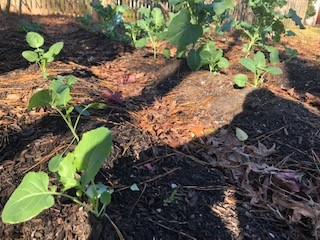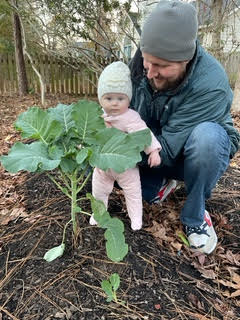Growing Heirloom Italian Broccoli
go.ncsu.edu/readext?839415
en Español / em Português
El inglés es el idioma de control de esta página. En la medida en que haya algún conflicto entre la traducción al inglés y la traducción, el inglés prevalece.
Al hacer clic en el enlace de traducción se activa un servicio de traducción gratuito para convertir la página al español. Al igual que con cualquier traducción por Internet, la conversión no es sensible al contexto y puede que no traduzca el texto en su significado original. NC State Extension no garantiza la exactitud del texto traducido. Por favor, tenga en cuenta que algunas aplicaciones y/o servicios pueden no funcionar como se espera cuando se traducen.
Português
Inglês é o idioma de controle desta página. Na medida que haja algum conflito entre o texto original em Inglês e a tradução, o Inglês prevalece.
Ao clicar no link de tradução, um serviço gratuito de tradução será ativado para converter a página para o Português. Como em qualquer tradução pela internet, a conversão não é sensivel ao contexto e pode não ocorrer a tradução para o significado orginal. O serviço de Extensão da Carolina do Norte (NC State Extension) não garante a exatidão do texto traduzido. Por favor, observe que algumas funções ou serviços podem não funcionar como esperado após a tradução.
English
English is the controlling language of this page. To the extent there is any conflict between the English text and the translation, English controls.
Clicking on the translation link activates a free translation service to convert the page to Spanish. As with any Internet translation, the conversion is not context-sensitive and may not translate the text to its original meaning. NC State Extension does not guarantee the accuracy of the translated text. Please note that some applications and/or services may not function as expected when translated.
Collapse ▲Broccoli Brassica oleracea (Italica Group) ‘’Di Cicco’ is an excellent heirloom variety originating from Italy that produces numerous small to medium sized heads. In Carteret County, this variety can be sown in late summer, fall and early winter for harvest in late winter/early spring. Seeds usually take 7-14 days to emerge, should be planted at a 1/8 inch depth in well-drained soil (rich in nutrients and organic matter) and spaced every 36 inches. Broccoli is a heavy feeder and requires consistent moisture and full sun.

Broccoli row spacing. Photo by: Michael Thomas
It normally takes a minimum of 48 days for plants to mature, but planting during winter will lengthen this time. Plants can withstand frost, but multiple days with below freezing temperatures and/or snow may cause damage to the plants. Broccoli heads are actually clusters of unopened flowers, which will eventually open to reveal flowers if not harvested before the florets open. These flowers are actually very attractive to pollinators. To encourage side florets, cut the main head when it reaches 3 inches in diameter.

Broccoli ‘Di Cicco’, Photo: Michael Thomas
One of the most-healthy vegetables, broccoli contains vitamins C and A, iron, potassium and folic acid. Be sure to rotate your Brassicas so they aren’t growing in the same soil each year to prevent the build up of soil borne pathogens. A three year rotation will reduce soil borne insect and disease pressure.
If there is a particular plant that you have an issue with or need help identifying, visit North Carolina Cooperative Extension or call (252) 222-6352.
Written by Michael W. Thomas – Extension Master Gardener Volunteer – Carteret County

Young gardener starting early and author Michael Thomas




